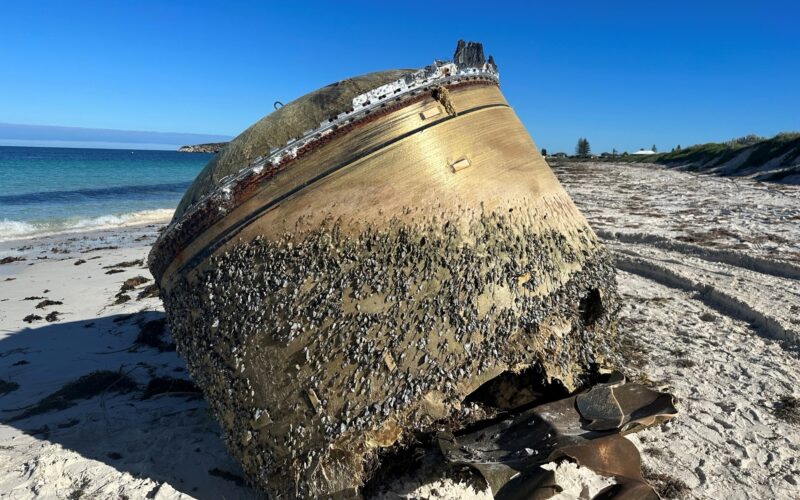A mysterious object that washed out on a beach in Green Head, Western Australia is likely debris from an Indian rocket, the Australian Space Agency (ASA) confirmed.
The bulky barnacle-encrusted cylinder, which is about the size of a small car, was found on June 16, 2023, and sparked speculations online about its origins. Some hypothesized it as remains from a military exercise, while others made connections to the infamous disappearance of Malaysian Airlines flight MH370.
However, the ASA has since identified the object as debris from the third stage of a Polar Satellite Launch Vehicle (PSLV), operated by the Indian Space Research Organization (ISRO).
“The debris remains in storage and the Australian Space Agency is working with ISRO, who will provide further confirmation to determine next steps, including considering obligations under the United Nations space treaties,” ASA said in a statement released on July 31, 2023.
The find has already spurred discussions regarding potential tourism prospects. The council of the Shire of Coorow, where Green Head is located, expressed interest in transforming the debris into a local attraction, pending ISRO’s decision on claiming the object.
While most space debris either burns up in Earth’s atmosphere or remains in orbit, occasionally, parts such as this one survive the descent and land on Earth.
Space debris can refer to any part of a space system no longer in use, from retired satellites to discarded rocket parts. As the space industry grows, space debris incidents are expected to become more common, and potentially more dangerous.
According to a study published by Nature Astronomy, the chance of damage to property over the next decade is as high as 1% for any given re-entry.
The discovery of Indian rocker debris is also not the first encounter Australia has had with remnants from space travel. The country previously uncovered parts from Elon Musk company’s SpaceX mission in 2022 and NASA’s Skylab space station in 2013.

